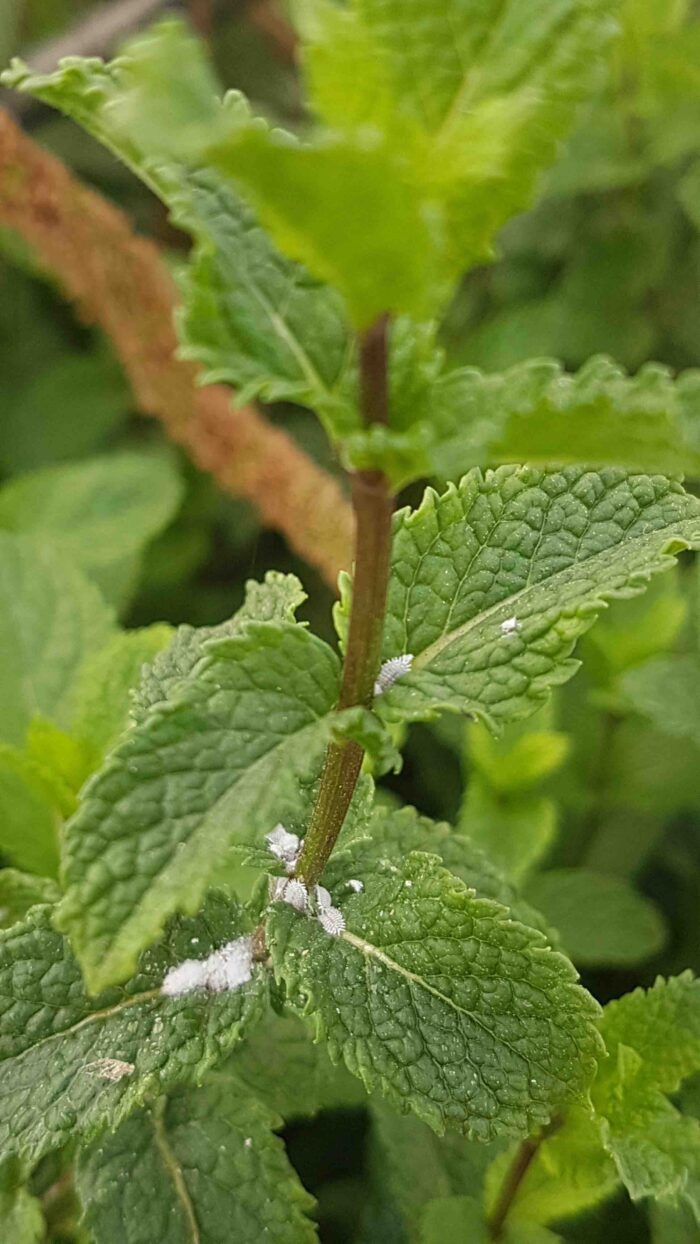Hama serbuk putih
Apple, grapevines, peppers, eggplant, basil, mint, sage, papaya, cucumber, potatoes, barbary fig (and other cactaceae members), rose, mango, pineapple, squash, citrus, sugarcane, coffee, palms, cassava, sunflower, pear, blueberry, raspberry, mulberry, banana, and cocoa
They feed on the phloem by sucking sap from plants. Symptoms appear as small white patches on stems and fruits, followed by the formation of honeydew and the development of sooty mold near infected areas. Mealybugs are known for their ability to transmit plant viruses and can cause heavy losses to economically important crops.
Considered to be a soft scale insects, mealybugs derived their name from their appearance. Usually, mealybugs are covered with a sticky wax floury or cornmeal-like whitish powder. Some species reproduce sexualy, while others are parthenogenic. Mealybugs may be oviparous, viviparous, or ovoviviparous. Their eggs are usually laid in loose masses of cottony wax ovisacs. The flowering and fruiting phases of plants help support a larger mealybug population.
Mealybug species of economical importance include: pink hibiscus mealybug, miscanthus mealybug, papaya mealybug, vine mealybug, and citrus mealybug.
Metode untuk menangulangin kutu putih yang bervariasi tergantung pada tanaman inang sampai dengan batas tertentu dari genus tanaman. Namun demikian, beberapa langkah adalah umum dilakukan.
Alat pemantauan hama (perangkap) sangat penting untuk mengetahui sebaran populasi dari hama.
Perangkap komersial merupakan salah satu cara yang di rancang untuk penangkapan secara masal. Perangkap ini hanyalah alternatif untuk perlakuan secara konvensional dan dilakukan dengan cara pemantauan secara rutin dan sistematis tingkat populasi hama.
Vektor penyebab tingginya penyebaran dan pembetukan kutu putih adalah semut. Semut sangat menyukai tanaman melon dan dapat memiliki pengaruh menekan musuh alami dari kutu putih.
Kebersihan area penanaman adalah hal terpenting, hindarkan tanaman dari gulma, sisa-sisa tanaman, bagian tanaman yang rusak, pertumbuhan tanaman yang tidak di ingginkan dan tanaman lain yang bukan merupakan tanaman utama budidaya.
Produk yang digunakan oleh satu atau sebagian dari dunia adalah mengandung bahan aktif sebagai berikut:
sulfoxaflor, spirotetramat, buprofezine, extract of chenopodium, chlorpyrifos, imidacloprid, thiamethoxam, acetamiprid, dan thiachloprid.
neem oil, tea-tree oil, mineral oil, dan detergents di buat khususnya untuk digunakan pada produk pertanian.
Serangga menguntungkan yang ada secara komersial adalah anagyrus pseudococci dan leptomastix dactylopii. Dan tahapan larva untuk predator adalah cryptolaemus montrouzieri.
Catatan : pelepasan musuh alami dari kutu putih perlu dilakukan control terhadap populasi semut
*Names marked in red are considered to be highly poisonous to beneficial insects.
*Names marked in green are considered to be organic and IPM (integrated pest management) compatible.
Image Gallery


